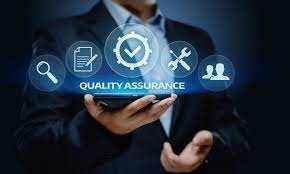The different roles and benefits of stakeholders can be summarised as follows:
|
Stakeholders |
Role |
Benefits |
|
Shareholders |
Financial support and commitment |
Better financial return/profits |
|
Management |
Provide strategic direction and support process on all levels |
Increased performance of line department |
|
Coaches |
Manage process on day-to-day basis |
Increased performance of line department |
|
Human Resources |
Project management. Provide expert guidance and consulting support |
Improved credibility of HR initiatives and opportunity for project implementation reward |
|
Unions |
Support process by buying into the concept |
Increased financial reward and development for their members |
|
Learners/Coachees |
Buy-in and active participation |
Better financial regard and development of skills and knowledge. |
It is therefore important to analyse the value add of the learning development and coaching expense and to report back.
The final logical stage in the development process is to find out how effective the training and coaching has been. There are few who would disagree with this and yet practice tends to suggest that in many organisations validation of development is either ignored or it is approached in an unconvincing or an unprofessional manner. In some organisations, it has been claimed that validation is too costly it doesn’t really prove anything, or it isn’t really applicable because development cannot be valued in financial terms. Some coaches have reflected a defensive approach to validation because they have felt that it invites criticism.
Quality Assurance

An effective quality assurance framework consists of three elements.
1. Setting quality standards and targets:
- Targets around enrolment, retention and achievement of the qualification.
- Targets for developing the delivery of the programme.
2. Self–assessment to determine strengths and weaknesses of provision through evidence (gained by):
- Obtaining views – asking learners, facilitators and other stakeholders.
- Observing the learning and teaching of skills.
- Benchmarking performance.
- Measuring performance against targets.
3. Improvement plans:
- Recognising strengths and planning to disseminate good practice.
- Identifying weakness and detailing actions to achieve improvement.
- Feeding into strategic and operational plans.
Getting Feedback from Learners
One way to evaluate a learning event is to get feedback from the learners to see if the transference of skill into the workplace has taken place.
Learning Impact
This is the extent to which participants change attitudes, improve knowledge and increase skill as a result of attending the program. It addresses the question: Did the participants learn anything? The learning evaluation requires post-testing to ascertain what skills were learned during the training. In addition, the post-testing is only valid when combined with pre-testing, so that you can differentiate between what they already knew prior to training and what they actually learned during the training program.
Measuring the learning that takes place in a training program is important in order to validate the learning objectives. Evaluating the learning that has taken place typically focuses on such questions as:
- What knowledge was acquired?
- What skills were developed or enhanced?
- What attitudes were changed?
Learner assessments are created to allow a judgment to be made about the learner’s capability for performance. There are two parts to this process: the gathering of information or evidence (testing the learner) and the judging of the information (what does the data represent?).